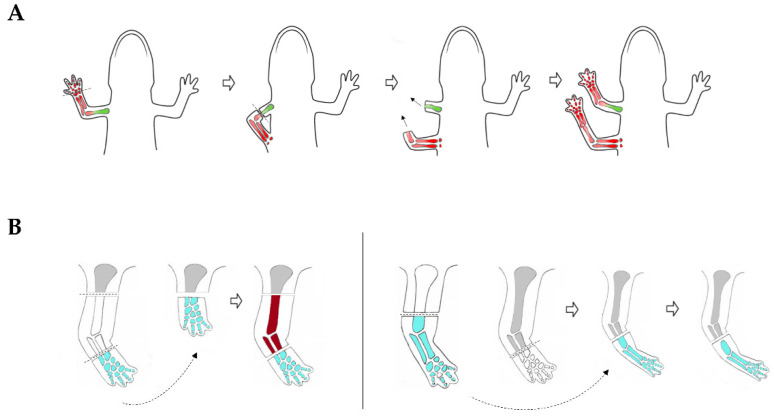Figure 4.
Experiments illustrating the principles of positional memory in salamander limb. (A) Rule of distal transformation. After the creation of a circularized limb, successive amputation induces the creation of two stumps, one with correct polarity and one with reversed polarity. Both stumps regenerate distal elements from the level of amputation, thus duplicating the distal segments already present in the reversed stump. The proximo-distal axis is indicated with a gradient of green (indicating proximal elements) and red (indicating distal elements). (B) Intercalation. Intercalary regeneration (dark red) occurs if a hand is grafted to an upper arm (left), but not if an upper arm segment is grafted to a forearm (right). Adapted from Carlson 2007.

